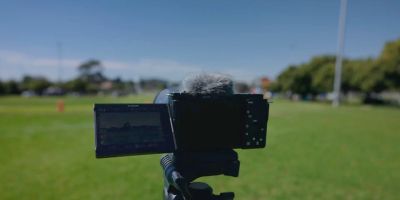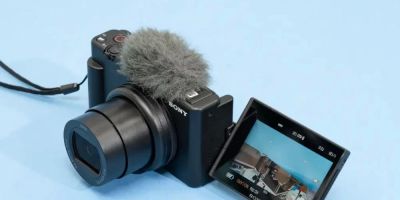How to Take Dynamic Action Shots with a DSLR Camera
Capturing fast-moving subjects in action, whether it’s a sports event, a running animal, or a lively street scene, can be one of the most thrilling yet challenging aspects of photography. As a photography enthusiast, I’ve often found myself intrigued by the art of dynamic action shots, particularly with a DSLR camera. If you’re aiming to master the art of shooting motion and capturing those decisive moments, here are some tips I’ve gathered over the years to help you elevate your action photography game.
1. Use the Right Lens for Speed
One of the most critical aspects of shooting dynamic action shots is having the right lens. When I first started photographing action, I quickly realized that a standard lens won’t always do the trick. For fast-moving subjects, a lens with a fast autofocus system and a focal length suitable for the distance of your subject is essential. A telephoto lens, like a 70-200mm f/2.8, has been a game-changer for me, allowing me to zoom in on subjects from a distance while maintaining sharpness and clarity.
2. Choose the Correct Camera Mode
The next thing I learned was that selecting the right camera mode is crucial. For action shots, using Shutter Priority (S) or Manual mode is the way to go. In Shutter Priority, you can control the shutter speed while letting the camera adjust the aperture. I tend to go for a faster shutter speed (1/500 or higher) to freeze motion, though for a more dynamic look, you might opt for a slightly slower speed to capture a sense of movement in your subjects.
3. Focus on the Right Autofocus Setting
As I delved deeper into capturing fast-moving subjects, I realized the importance of autofocus settings. For sports and action photography, I recommend using the continuous autofocus mode (AI Servo on Canon or AF-C on Nikon). This mode helps track moving subjects, adjusting focus as they move across the frame. This setting has been a lifesaver when photographing anything from running athletes to a dog in mid-leap.
4. Understand Your Camera's Burst Mode
Another invaluable tool for action shots is the burst mode. In my experience, taking multiple frames per second helps increase the chances of capturing that perfect moment. By holding down the shutter button, you can shoot a continuous sequence of images, which is especially useful for fast-moving subjects where timing is everything. Many DSLRs offer a high burst rate, so take advantage of it to capture as many frames as possible in rapid succession.
5. Control Your ISO Settings
While shutter speed and aperture are vital for action shots, I can’t stress enough the importance of controlling your ISO settings. I’ve found that balancing ISO is key to maintaining sharpness without introducing too much noise. On bright days, I prefer keeping my ISO low (around 100-400), but in low-light situations, I might raise it to 800-1600, depending on the ambient light and shutter speed needed.
6. Be Ready for the Moment
Perhaps one of the most important lessons I’ve learned is to always be ready to capture the moment. Action shots are fleeting, and they often happen in the blink of an eye. Staying alert and anticipating where the action will unfold allows you to press the shutter at just the right moment. I also recommend pre-focusing on a specific area where you expect the action to occur—this technique helps reduce the time it takes for the camera to focus once the action begins.
7. Experiment with Panning for Creative Motion
While freezing the action with a fast shutter speed is great, don’t be afraid to experiment with panning to add a creative sense of motion. Panning involves moving the camera along with your subject’s movement, using a slower shutter speed. The result is a sharp subject with a beautifully blurred background, which adds energy and dynamism to the shot. It’s a technique that I’ve found incredibly useful in everything from photographing cars racing to athletes running.
8. Post-Processing to Enhance the Action
Finally, while getting the perfect shot in-camera is always the goal, post-processing can help take your action shots to the next level. Adjusting the exposure, sharpening the details, and correcting color balance can bring out the vibrancy of your images. In my case, I often use Lightroom or Photoshop to refine my action shots, ensuring they look their best before sharing them.
9. Practice and Patience
Above all, one of the most important aspects of mastering action photography is practice. The more you practice, the more you’ll get a feel for timing and the nuances of your DSLR camera. Each action shot is unique, so don’t get discouraged if you don’t nail the shot right away. Patience is key to improving and capturing the perfect action moment.
By following these tips and continuously practicing, I’ve found myself capturing dynamic action shots that convey emotion and energy. Whether you're photographing a sports event, a pet in motion, or a fast-moving object, the key is understanding your camera and being ready to capture the action at just the right moment. Happy shooting!





